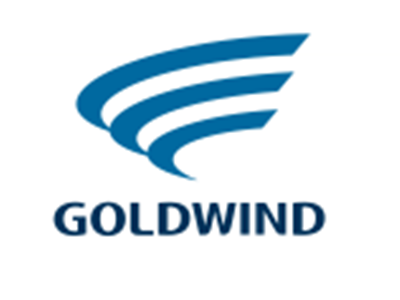GOLDWIND(02208)
Search documents
金风科技(002202.SZ):本次减持金力永磁股份,公司可获得投资收益约2.15亿元
Ge Long Hui A P P· 2025-12-08 10:14
格隆汇12月8日丨金风科技(002202.SZ)公布,2025年10月13日至2025年12月5日,金风投资通过集中竞 价和大宗交易的方式合计减持金力永磁股份12,284,835股,减持交易金额约4.59亿元。截至2025年12月5 日,金风投资持有金力永磁25,150,779股,占金力永磁股本总数的1.83%。金风投资将根据市场情况, 继续减持所持金力永磁股份,并根据后续收益情况持续披露进展公告。 本次减持所获收益计入公司当期损益。本次金风投资合计减持金力永磁股份12,284,835股,经公司初步 测算,公司可获得投资收益约2.15亿元(所得税前),约占2024年度经审计归属于上市公司股东净利润 的11.53%,将对公司2025年业绩产生积极影响。 ...
金风科技:本次减持金力永磁股份,公司可获得投资收益约2.15亿元


Ge Long Hui· 2025-12-08 10:09
本次减持所获收益计入公司当期损益。本次金风投资合计减持金力永磁股份12,284,835股,经公司初步 测算,公司可获得投资收益约2.15亿元(所得税前),约占2024年度经审计归属于上市公司股东净利润 的11.53%,将对公司2025年业绩产生积极影响。 格隆汇12月8日丨金风科技(002202.SZ)公布,2025年10月13日至2025年12月5日,金风投资通过集中竞 价和大宗交易的方式合计减持金力永磁股份12,284,835股,减持交易金额约4.59亿元。截至2025年12月5 日,金风投资持有金力永磁25,150,779股,占金力永磁股本总数的1.83%。金风投资将根据市场情况, 继续减持所持金力永磁股份,并根据后续收益情况持续披露进展公告。 ...
金风科技(002202) - 关于全资子公司减持金力永磁股份的进展公告


2025-12-08 10:01
关于全资子公司减持金力永磁股份的进展公告 本公司及董事会全体成员保证信息披露的内容真实、准确、完 整,没有虚假记载、误导性陈述或重大遗漏。 一、交易背景 金风科技股份有限公司(以下简称"公司"或"金风科技")第七届 董事会第九次会议和2019年度股东大会审议通过了《关于授权金风投 资董事会处置江西金力永磁科技股份有限公司股份的议案》,同意授 权全资子公司金风投资控股有限公司(以下简称"金风投资")董事会 根据市场变化和业务发展灵活把握交易机会,适时选择交易方式和交 易规模处置所持有江西金力永磁科技股份有限公司(以下简称"金力 永磁")剩余53,595,757股股份。具体内容详见公司于2020年4月29日 及2020年6月24日在深交所指定媒体《证券时报》、巨潮资讯网 ( www.cninfo.com.cn ) 及 香 港 联 合 交 易 所 有 限 公 司 网 站 (https://www.hkexnews.hk)披露的《关于授权金风投资董事会处置 江西金力永磁科技股份有限公司股份的公告》(公告编号:2020-027)、 《2019年度股东大会议决议公告》(公告编号:2020-042)。 公司分别于2020年 ...
金风科技:金风投资减持金力永磁股份1228.48万股
Xin Lang Cai Jing· 2025-12-08 09:59
金风科技公告,金风投资于2025年10月13日至2025年12月5日通过集中竞价和大宗交易的方式合计减持 金力永磁股份1228.48万股,减持交易金额约4.59亿元。截至2025年12月5日,金风投资持有金力永磁 2515.08万股,占金力永磁股本总数的1.83%。本次减持所获收益计入公司当期损益,公司可获得投资收 益约2.15亿元(所得税前),约占2024年度经审计归属于上市公司股东净利润的11.53%,将对公司2025 年业绩产生积极影响。 ...
金风科技(02208)子公司金风投资合计减持金力永磁股份1228.48万股
智通财经网· 2025-12-08 09:54
智通财经APP讯,金风科技(02208)发布公告,2025年10月13日至2025年12月5日,金风投资通过集中竞 价和大宗交易的方式合计减持金力永磁股份1228.48万股,减持交易金额约4.59亿元。截至2025年12月5 日,金风投资持有金力永磁2515.08万股,占金力永磁股本总数的1.83%。金风投资将根据市场情况,继 续减持所持金力永磁股份,并根据后续收益情况持续披露进展公告。 ...
金风科技子公司金风投资合计减持金力永磁股份1228.48万股
Zhi Tong Cai Jing· 2025-12-08 09:53
金风科技(002202)(02208)发布公告,2025年10月13日至2025年12月5日,金风投资通过集中竞价和大 宗交易的方式合计减持金力永磁(300748)股份1228.48万股,减持交易金额约4.59亿元。截至2025年12 月5日,金风投资持有金力永磁2515.08万股,占金力永磁股本总数的1.83%。金风投资将根据市场情 况,继续减持所持金力永磁股份,并根据后续收益情况持续披露进展公告。 ...
金风科技(02208) - 关於全资子公司减持金力永磁股份的进展公告


2025-12-08 09:45
香港交易及結算所有限公司及香港聯合交易所有限公司對本公告的內容概不負責,對其 準確性或完整性亦不發表任何聲明,並明確表示,概不對因本公告全部或任何部份內容 而產生或因倚賴該等內容而引致的任何損失承擔任何責任。 GOLDWIND SCIENCE&TECHNOLOGY CO., LTD.* 金風科技股份有限公司 股票代码:002202 股票简称:金风科技 公告编号:2025-107 ( 於中華人民共和國註冊成立的股份有限公司 ) (Stock Code: 02208) 海外監管公告 本公告乃根據《香港聯合交易所有限公司證券上市規則》第13.10B條而作出。 金风科技股份有限公司 茲載列金風科技股份有限公司在深圳證券交易所網站刊登的《金風科技股份有限 公司關於全資子公司減持金力永磁股份的進展公告》,僅供參閱。 承董事會命 金風科技股份有限公司 馬金儒 公司秘書 北京,2025年12月8日 於本公告日期,公司執行董事為武鋼先生及曹志剛先生;公司非執行董事為高建軍先生、楊 麗迎女士及張旭東先生;公司獨立非執行董事為曾憲芬先生、劉登清先生及苗兆光先生;及 公司職工代表董事為余寧女士。 *僅供識別 二、交易进展 鉴于金力永 ...
电力设备与新能源行业周观察:看好变压器、燃气轮机海外需求,机器人产业化推进
HUAXI Securities· 2025-12-07 12:16
证券研究报告|行业研究周报 [Table_Date] 2025 年 12 月 7 日 [Table_Title] 看好变压器&燃气轮机海外需求,机器人产业化推 进 [Table_Title2] 电力设备与新能源行业周观察 [Table_Summary] 报告摘要 随着海内外企业布局加速&AI 技术突破,人形机器有望迎来量产落 地时点。在降本需求的驱动下,人形机器人核心零部件的国产替代 需求强烈,市场空间广阔,率先取得突破的国内企业有望深度受 益。灵巧手、大脑和轻量化是人形机器人商业化落地的关键环节, 重点看好技术迭代和产业演进领先的国内生产厂商。 多家车企公布 11 月新能源汽车交付/销量 我们认为,在行业旺季趋势下,11月国内多数车企实现新能源汽车 交付/销量环比增长,全年新能源汽车表现亮眼。明年展望来看, 国内新能源汽车预计保持稳定增长,商用车电动化率提升叠加单车 带电量的增加预计带动动力电池需求较快增长。叠加国内外储能高 景气度,预计全年锂电池出货同比增长明显。在前期供给过剩导致 价格大幅下跌的背景下,动力及储能电池产业链多数企业出现亏 损。在"反内卷"趋势下,叠加海内外动储需求共振,电池及材料 环节迎 ...
网络名人走进八闽大地 看中国式现代化的“福建脉动”
Xin Hua Wang· 2025-12-07 08:25
在本次活动的福州站,网络名人、媒体记者、网络平台代表们走进位于福清市的福建三峡海上风电国际产业园。作为全国首 个产业链集聚、首个实现"碳中和"的海上风电工业园区,福建三峡海上风电国际产业园创造了多项"唯一"和"领先":园区拥有全 球首个国际化大功率海上风电试验场,通过"同台竞技"筛选优质企业,形成了"研发—制造—检测—运维—培训"五位一体的产业 集群,填补福建海上风电产业链空白;园区相继下线6.7—26MW海上风电机组,多款机组获评"央企十大国之重器",推动我国海 上风电从"跟跑"迈向"领跑"。 作为园区产业链上的"明星企业",金风科技股份有限公司累计出口风机占我国出口总量近50%,市场占有率已连续14年位居 中国榜首。集团所属企业福建金风科技有限公司高级顾问胡建华介绍说,立足福建风电资源优势,企业通过持续不断的技术创新 和上下游产业链的紧密合作,已在福清市连续下线了5代风机。 "金风科技在福建的探索,不是单一的风电装备制造与风电场建设,而是迈向能源与交通、工业、民生等多领域的深度融 合。"胡建华介绍说,从服务平潭海峡公铁大桥的6.7兆瓦机组,到应用于漳浦六鳌海上风电场二期项目的16兆瓦机组,金风科技 在海上 ...
12月5日国企改革(399974)指数涨0.91%,成份股金风科技(002202)领涨
Sou Hu Cai Jing· 2025-12-05 10:52
证券之星消息,12月5日,国企改革(399974)指数报收于1869.16点,涨0.91%,成交1154.51亿元,换 手率0.76%。当日该指数成份股中,上涨的有71家,金风科技以5.46%的涨幅领涨,下跌的有28家,深南 电路以2.74%的跌幅领跌。 国企改革(399974)指数十大成份股详情如下: | 证券代码 | 股票简称 | 权重 | 最新价 | 涨跌幅 | 总市值(亿元) | | 所属行业 | | --- | --- | --- | --- | --- | --- | --- | --- | | sh601899 | 紫金矿业 | 3.48% | 31.32 | 2.05% | | 8324.09 | ■ 有色金属 | | sh600036 | 招商银行 | 3.03% | 43.45 | 0.53% | | 10958.02 | ● 银行 | | sh600900 | 长江电力 | 2.98% | 28.07 | -0.60% | | 6868.23 | 公用事业 | | sz002371 | 北方华创 | 2.96% | 450.50 | 0.16% | S | 3263.76 | 甲子 | ...

